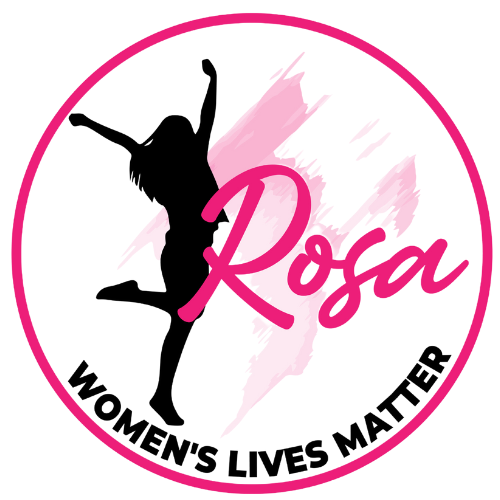Forced Marriage Campaign
Forced Marriage: A Serious Violation of Human Rights
What is Forced Marriage?
Forced marriage involves coercing someone into marrying another person against their will, often through pressure or deceit. Unlike arranged marriages, where both parties consent, forced marriages are a global issue affecting individuals regardless of cultural background. This article explores the causes, implications, and measures to combat forced marriage.

Understanding Forced Marriage
Forced marriage is a form of domestic violence, often targeting young people, compelling them to marry without their consent. This coercion can involve threats, deception, or psychological pressure, stripping individuals of their freedom to choose their life partners. The consequences are severe, including emotional trauma, health risks, and social isolation.
Forced marriage falls within the broader spectrum of violence against women and girls (VAWG) and is a criminal offense in the UK. This legal stance reflects the principle that no one should be deprived of their freedom or forced into marriage.
Factors Leading to Forced Marriage
Several factors contribute to forced marriages, including:
- Cultural or Traditional Norms: Emphasis on family honor, reputation, or social status in some cultures can drive forced marriages.
- Misinterpretation of Religious Beliefs: Misguided interpretations of religious texts may justify forced marriages, although this does not represent the beliefs of most religious communities.
- Gender Inequality: Societal disparities make women and girls particularly vulnerable, often treating them as commodities or tools to uphold family honor.
- Economic Pressures: Financial hardships or dowry demands can lead families to view marriage as a solution to economic difficulties.
Consequences of Forced Marriage
Forced marriage inflicts significant harm on those involved, including:
- Loss of Autonomy: Victims are deprived of their right to choose their partners, stripping them of their personal agency.
- Emotional and Psychological Trauma: Forced marriage often results in severe emotional distress, including anxiety, depression, and PTSD.
- Health Risks: Victims face increased risks of early and unwanted pregnancies, leading to physical and mental health challenges.
- Violence and Abuse: Forced marriages frequently involve physical, sexual, and emotional abuse.
- Social Isolation: Victims often become isolated from their support networks, making it difficult to seek help.

Examples of Forced Marriage
Forced marriage occurs worldwide in various forms, including:
- Underage Marriage: Young girls, sometimes as young as 12 or 13, are married off to older men by their families.
- Cultural or Religious Pressure: Individuals may be pressured to marry someone chosen by their family to preserve traditions.
- Immigrant Communities: Individuals in immigrant communities may be forced into marriage to strengthen family ties or facilitate spousal immigration.
- Exchange Marriage: Families agree to exchange brides to settle debts or disputes, without considering the desires of the brides.
- To Resolve a Crime: In some cultures, a woman or girl may be forced to marry her rapist to preserve family honor.
- To Control Behavior or Sexuality: Forced marriages can aim to control a person’s behavior, especially regarding sexual orientation.
- Marriage for Citizenship: Individuals may be forced into marriage for one spouse to gain citizenship or residency.
- For Economic Gain: Families may force a member to marry to merge property, settle debts, or gain financially through dowry.
Notable Cases of Forced Marriage
Several high-profile cases have highlighted the issue of forced marriage globally:
- Nujood Ali (Yemen): Forced into marriage at ten, Nujood gained international recognition when she sought a divorce in a Yemeni court in 2008.
- Samiya David (Uganda): Forced into marriage at 15, Samiya escaped and her case set a legal precedent in Uganda.
- Sherry Johnson (USA): Forced to marry her rapist at 11, Sherry worked to change the law in Florida, prohibiting marriage for individuals under 17.
- Amina Filali (Morocco): Forced to marry her rapist, Amina’s tragic death by suicide sparked protests and calls for legal reform.
- Sahar Gul (Afghanistan): Forced into marriage at 13, Sahar endured severe abuse, bringing attention to the plight of child brides in Afghanistan.
- UK Cases: The UK’s Forced Marriage Unit handles numerous cases annually, highlighting the issue within British South Asian communities.
Prevention and Addressing Forced Marriage
Efforts to prevent and address forced marriage involve a comprehensive approach, including:
- Legislation: Many countries have enacted laws to criminalize forced marriage and protect potential victims.
- Education and Awareness: Raising awareness and educating communities about human rights, consent, and gender equality is crucial.
- Support Services: Providing safe spaces, counseling, legal aid, and shelters is vital in helping survivors escape and recover.
- Community Engagement: Collaborating with communities, religious leaders, and local organizations to change social norms and attitudes towards forced marriage.
- International Efforts: Global cooperation aims to eliminate forced marriage, aligning with international goals like the United Nations’ Sustainable Development Goal 5.3.
Conclusion
Forced marriage is a grave violation of human rights, affecting individuals worldwide. Addressing this issue requires a multifaceted approach, including legal measures, education, support services, and community engagement. By working together, we can help prevent forced marriages and support those affected, ensuring their right to choose their partners and lead autonomous lives.
